– The 8th European Creative Industries Summit, Vienna, Oct 3 & 4 2018, reached out to 188.000 `persons´ in Twitter –
The place, the Sky Lounge of the Austrian Economic Chamber in Vienna, mirrored the tone of the Day and set the agenda for promoting the Creative Industries in the next policies and programs from 2021 to 2027 of the European Union – BEYOND. 150 participants followed the invitation of European Creative Business Network (ECBN) and Kreativwirtschaft Austria (KAT) to the conference on creative industries of the EU-presidency Austria: The 8th European Creative Industries Summit (ECIS), initiated in 2010, was in itself an innovation – for the first time an open innovation format was introduced and the classical keynote conference left behind. As the participating stakeholders and decision-makers are innovators and speakers themselves, the conference offered eight parallel open spaces to develop in teams topics, ideas and projects – and to pitch them as a final highlight of the summit: programs and policies to boost cross-innovations driven by cultural creative industries.
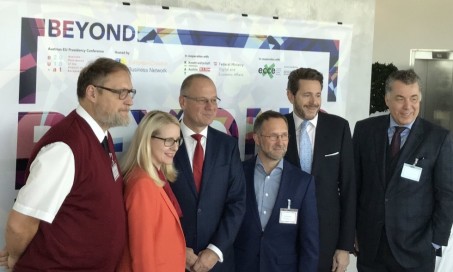
Left to Right: Gerin Trautenberger, Margarete Schramböck, Tibor Navracsics, Bernd Fesel, Harald Mahrer, Christian Ehler
The ECIS was a day of co-creating policies for the European Union, a chance and support welcomed by Commissioner Tibor Navracisics from the very start: „I am very happy to be here with you at this 8th European Creative Industries Summit. It is fitting that this event takes place while we are negotiating the EU’s future budget for the period 2021 to 2027. A budget that should play a stronger role in supporting the cultural and creative industries.
This policy perspective was applauded and supported by the sectors of the Creative Industries !
Navracsics was keen to point out the culture has more to offer than economic benefits – social cohesion and the European project as a whole are greatly supported by culture. „The growing divisions between and within our Member States are a stark reminder that we need to work harder on building bridges. Culture must be one of the key pillars of this bridge.“
„Funding needs to go hand in hand with policy priorities.“
Commissioner Tibor Navracsics ( Full Speech Here )
Navracsics highlighted projects of the last years supporting cross-innovations and points – to the New European Agenda for Culture, within which cross-sectorial policies and thus cross-innovations is the central method for the next programs 2021-2027 to come.
Cross-Innovation for Future Growth and Wellbeing in Europe:
Practices and Programms
Cross-Innovation from the Culture Creative Industries is not new, but still not widely recognized or even mainstreamed – mostly known in the field of urban development and city branding as programs as the UNESCO Creative City or EU Network of Creative Hubs shows.
Roger Tan, Director UNSense founded by UNStudio, Amsterdam, presented a new profession and business model arising at the crossroads of architecture & big data: UNSense “designs experiences and builds innovative ventures that improve the quality of life of people in buildings and cities worldwide.” (Review ppt here)
For growth and wellbeing to really benefit from Cross-Innovation of the Culture Creative Industries it must be mainstreamed to large impacts – and better evaluated ! To this end it is necessary to innovative policies and programs for innovation themselves, as Egbert Rühl, Board Member of ECBN and director Hamburg Kreativ Gesellschaft reminds. And that is what the ECIS open space were about: To co-create policies and programs for large scale impact innovations from the creative industries.
Focus on Challenges for well-being in daily life
The open spaces focused challenges and pain points in daily lifes in Europe wanting to propose handson solutions to improve wellbeing on a personal concrete basis:
- Digital Tech; Chair: Jan Bormans | Director | Startups.be | Belgium
- Heritage; Chair: Ugo Bacchella | President | Fitzcarraldo Fondazione | Italy
- Personal Mobility; Chair: Bart Ahsmann | Managing Director | CLICK.NL | Netherlands
- Supply Management for Creative Industries; Closing the gap – from creation to production to distribution; Chair: Eberhard Schrempf | Managing Director | Creative Industries Styria | Austria
- Health, Chair: Walter Amerika | Director | U CREATE | Netherlands
- Innovating Cross Innovation Support; Chair: Egbert Rühl | Director | Hamburg Kreativ Gesellschaft | Germany
- Skills Development for CCIS; Chair: Alessandra Proto | Acting Head | and Ekaterina Travkina | Manager |OECD Trento Centre for Local Development
- Infrastructures for Entrepreneurs; Chair: Barbara Stacher | Policy Officer | DG EAC European Commission
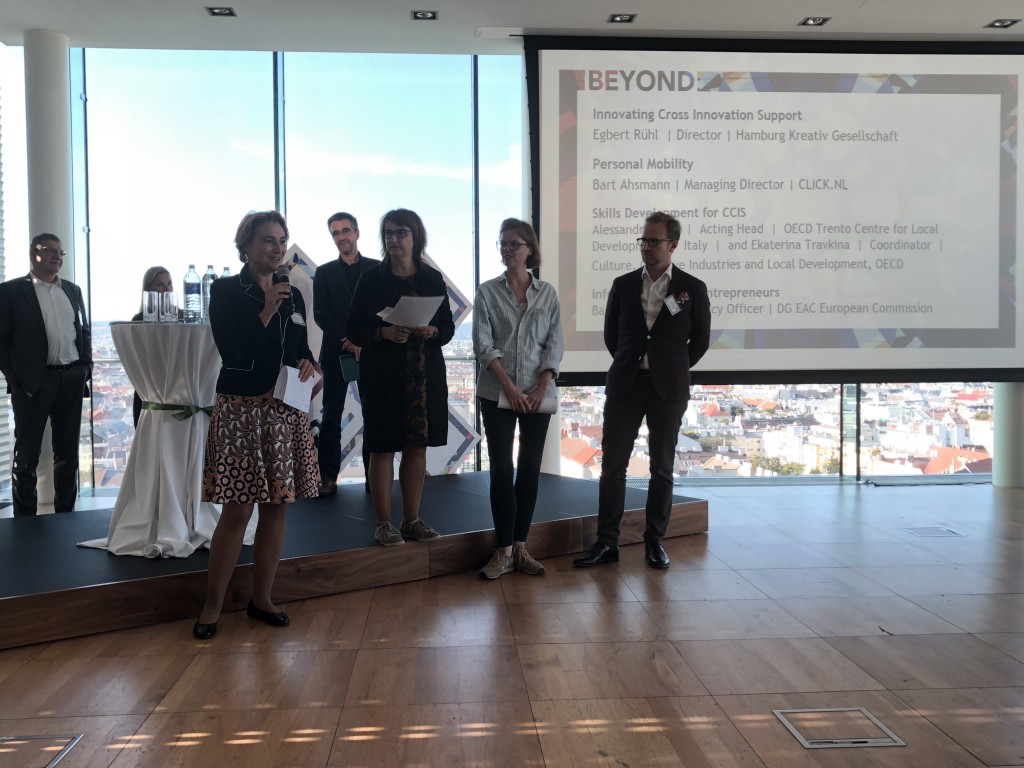
Left to Right: Egbert Rühl, Barbara Stacher, Bart Ahsmann, Rita De Graeve, Lieza Dessein, Kai Huotari
The findings and proposals to the EU-Commission will be published soon – here a sneak preview from the pitches:
- Enable sandboxes ( no risk, all play areas ) for cultural creative startups
- Focus health programs that target on future generations: children and young !
- Create a designer platform which supports Industry 4.0 and the renaissance of the local producers
- Support continious learning of cultural creative skills – if online or in academies.
Rita De Graeve, Adviseur Cultuur en Economie, Department Culture, Youth and Media, Flanderns, summarizes the open space on Infrastructures for Entrepreneurs: “Support for innovation driven by the cultural and creative sectors is not only a European or national topic. We urgently need to open it up to regions, cities and municipalities in order to serve local initiatives as well as the well-being of citizens. All innovation – even global innovation – must in the end convince locals.”
The Next Generation of Policies
After the pitches Christian Ehler, MEP, CoChair of the Intergroup for Cultural Creative Industries retraced the policy development since 2016 up til today – a time where for the first time in 15 years the chances are at hand to start an industrial strategy for Cultural Creative Industries. Ehler pointed to the need to better evaluated and proof the impact of such strategies and large scale investments – to this end the EU parliament proposed a new definition 2016 and is now engaged in adapting the statistical tools and methods. Based upon such research Christian Ehler explained his initiatives in the EU-parliament to create a cluster dedicated to research and innovation in the field of cultural and creative industries within the Horizon Europe Programme and to provide this cluster with a budget of 3 Billion Euro. From a Digital Cloud for Culture Heritage over Cross-Innovation in Health to making Europe more inclusive and open. The audience of experts and decision-makers applauded these proposals !
Mathea Fammels, Head of EIT Liaison Office, European Institute of Innovation and Technology (EIT), introduce the structure and working methods of the EIT – especially the Knowhow Innovation Community (KIC), which the EIT proposed to focus in the future also on cultural creative industries. KICs are funding agencies, created with a seed-funding by the EIT to develop with 7 to 14 years into a self-sustaining and self-financing promotion agency for the CCI. Besides the seed-funding for its structures KICs receives annual budgets from the EIT to be spend in topical calls. Currently the decision about a Creative KIC remains in the hands of the European Commission.
„We are ready to do impact policy for the Future of Europe.“
Bernd Fesel, Managing Director ECBN, points out that the Culture Creative Industries have matured since 2008, when the first report on the economies of culture was published under the of Presidency of José Manuel Durão Barroso. Today 10 years later the CCI has thrieved on diverse agendas like spillover effects (2012), entrepreneurial hubs ( 2015) and cross-innovation (2017). There are new structures and stakeholders in the sectors: The CCI has grown up and the ECIS is itself a proof of concept: „We assemble today here in this room 100 Million Euro turnover – from Hamburg to Kosice, Milano to Brussels ; Creative England to CI Styria and Ars electronica or CLICKNL and we – the leading makers of CCI – are here to make an offer to policy: we are ready to do the next step to scale and to do impact policy for the Future of Europe.“
Gerin Trautenberger, President of Kreativwirtschaft Austria: „Bringing the ECIS from Brussels to Vienna, in the midth of the EU Presidency debate about the next funding period, proofed to be the right step for the Creative Industries: Reaching 188.000 accounts and persons and 1.700.000 impressions is a clear signal to the European Commission to „play a stronger role in supporting the cultural and creative industries“.
Michal Hladky, Director CIKE, Kosice points to the next challenge: BEYOND is not only a guideline for innovation policies of the EU Commission, but for the sector ifself and certainly also ECBN: „We must reach beyond our current audience to welcome more companies and stakeholders – BEYOND the cultural creative sectors !“
Caroline Norbury, MBE, CEO Creative England, remembers the call of Austrian Economic Minister Margarete Schramböck for trust – not merely a personal skill, but a social situation to deal with changes and innovation, especially with the speed of digital changes: “Only then – with trust in the future – changes are perceived chances.”
Further sources:
Statement (German) of WKÖ-Präsident Mahrer, Bundesministerin Schramböck und EU-Kommissar Navracsics: Kreativwirtschaft stärker in europäisches Innovationssystem einbeziehen.


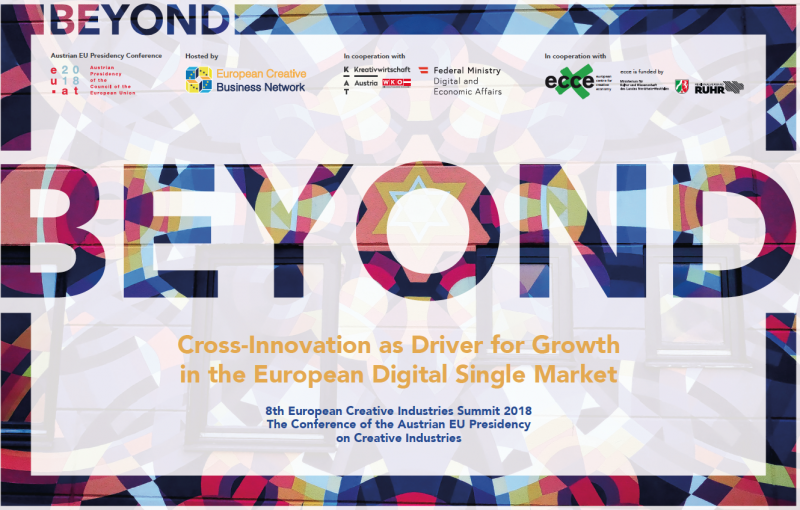
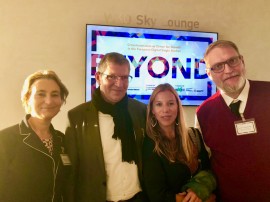

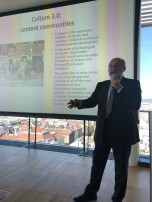
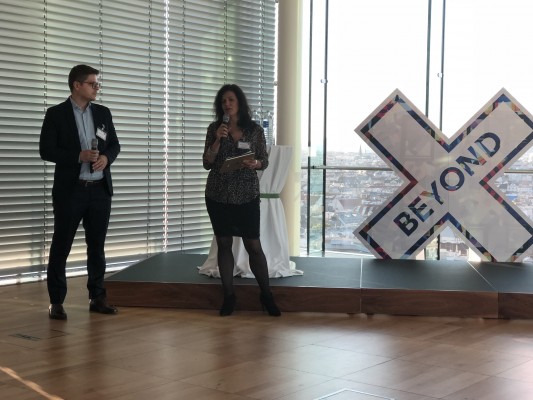
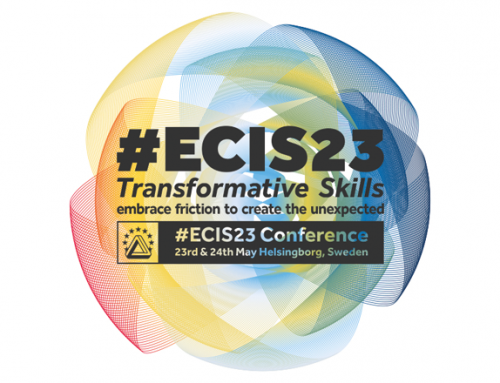
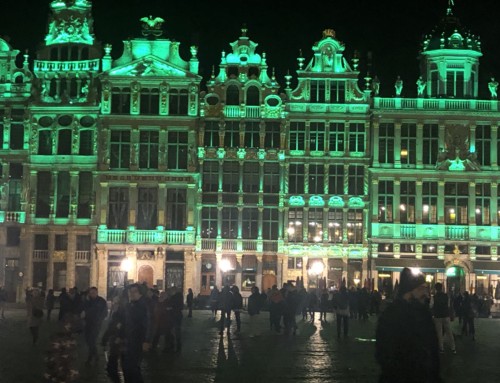
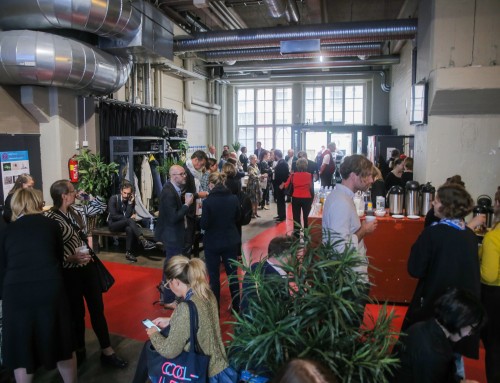

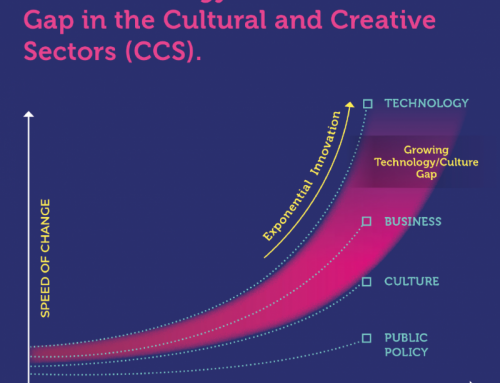
Leave A Comment